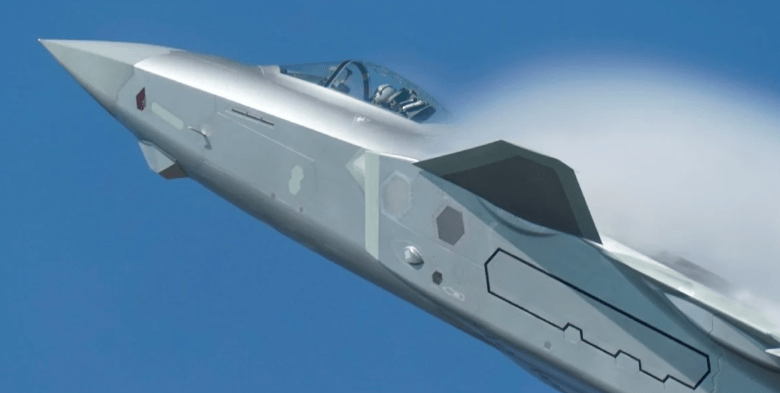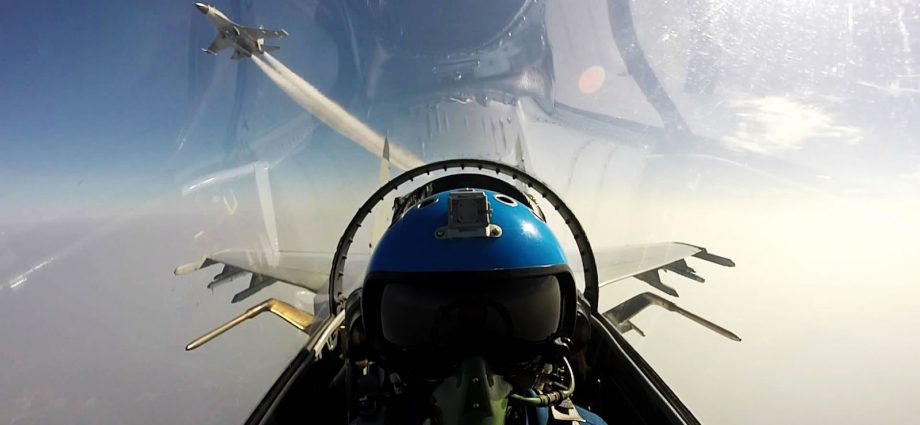China’s newly-trained fighter pilots are being rushed into action to intercept increasing foreign reconnaissance flights, according to recent news reports. This gives its novice pilots operational experience, reveals China’s responses to air incursions by the US and its allies, and adds new impetus to China’s reforms to its pilot training program.
Last week, South China Morning Post (SCMP) reported that People’s Liberation Army – Air Force (PLA-AF) fighter pilots fresh out of training had been sent to intercept increasing incursions by US and other foreign aircraft in the East and South China Seas. The report notes that in some cases pilots are put into action just a month after completing their training pipeline.
The SCMP report notes that US aircraft were involved in most of these encounters and that China is stepping up training for its new pilots to handle the situations. The report also says that the increased operations tempo is forcing China’s new pilots to learn flight skills quickly.
In particular, the report cites the experience of Song Zihao, a 24-year-old J-16 fighter-bomber pilot who was sent into action just a month after finishing postgraduate training.
“It was my first combat task, which required me to immediately transition from a training situation to a combat-ready air patrol,” Song said, as his aircraft was closest to the scene, according to the SCMP report.
Song mentioned that upon heading to the area his aircraft was targeted by air-to-air missiles, to which he responded with reciprocal measures. “I remained calm because I had faced similar scenarios on the first day of my training, seeing how senior pilots dealt with intruding foreign warplanes every day,” he said.
J-16 senior pilot Li Chao mentioned in the same SCMP report that PLA-AF pilots used several tactics to stop the intrusions, such as switching off onboard electronics to evade detection and making a full axial rotation to get behind the intruding aircraft.
Since early December 2022, SCMP notes that the US has increased close-in spy flights in the East China Sea and Yellow Sea while sending 680 reconnaissance flights in the South China Sea, with 68 of those occurring in December alone.
The same SCMP report mentions that in 2021, large US reconnaissance aircraft conducted 1,200 close-in spying flights in the South China Sea.

While the PLA-AF has made substantial recent strides in technological modernization, it is less clear that its pilots have been able to keep speed with the advances.
The PLA-AF’s pilot training program is known to suffer from significant human capital shortfalls at the institutional and instructor levels, which can affect its overall combat capabilities.
A 2016 RAND report mentions some shortfalls, such as poor flight-lead skills, overdependence on ground control, complacency in conducting flight exercises and insufficient coordination between different branches of the PLA-AF.
Moreover, the Rand report also states that PLA-AF flight instructors typically stay and spend their career at the flight academy from where they graduated, with very few pilots opting to return to flight academies to be instructors due to better promotion prospects in their operational units.
As a result, the report says that many PLA-AF flight instructors need more technical and hands-on operational experience.
Derek Solen notes in a February 2021 article for the China Aerospace Studies Institute (CASI) that the PLA-AF’s pilot training program on the 2010s took ten years due to a lack of officer training schools and single-service academies, as well as lack of specialized trainer aircraft.
Solen wrote that during that period the PLA-AF’s restrictive safety culture and rote instruction methods for training flights conducted only during fair weather resulted in a “nanny-approach” that graduated pilots ill-prepared for the realities of air combat.
Since then, however, China has made several steps to address the shortfalls of its pilot training program. SCMP reported in October 2022 that the PLA-AF had overhauled its tertiary training to focus on combat readiness and joint operations.
The report notes that the PLA-AF Logistics University in Xuzhou has streamlined its curriculum, cutting courses and classes not directly related to those areas and replacing them instead with courses such as emergency planning.
It also says that in 2020 the university changed more than 20 courses to prepare personnel for combat operations, such as spotting and fixing mechanical failures under fire. The report says that a similar shift was underway at the PLA-AF Command College in Beijing, with greater emphasis on joint operations and on-the-ground training.
Aside from reforming unrealistic and rigid training practices, Asia Times has previously reported that China has accelerated its pilot training program for 4th generation fighters such as the J-10C and J-16 from four to six years to three years to match the production rates of these advanced aircraft.

China has also been recruiting foreign talent to improve the quality of its instruction in its combat pilot training program. Asia Times has previously reported on China’s efforts to recruit ex-UK fighter pilots to train its pilots, noting that the retired pilots still think the same as their active-duty NATO counterparts and approach mission planning similarly.
These ex-UK fighter pilots may have shared with Chinese pilots their expertise in Composite Air Operation (COMAO) mission planning, which enables small numbers of combat aircraft to multitask over multiple sub-missions and use diversionary tactics.
Moreover, China may have already made a paradigm shift in training its pilots focusing on effects and results and moving away from pedantic practices.
A July 2022 article by the think tank Jamestown Foundation, cited by Solen, notes that previously PLA-AF trainers assessed pilot candidates based on how they can precisely execute strikes according to pre-determined mission plans.
However, Solen notes that this method does not assess actual combat performance, akin to evaluating a soldier based on how he fires his rifle on the range rather than hitting the target.
Solen goes on to mention that China has shifted from that paradigm to assessing its pilots based on the appropriateness of the munitions they use on practice targets and the duration of effects their strikes have on the target, encouraging pilots to perform strike missions more flexibly.

